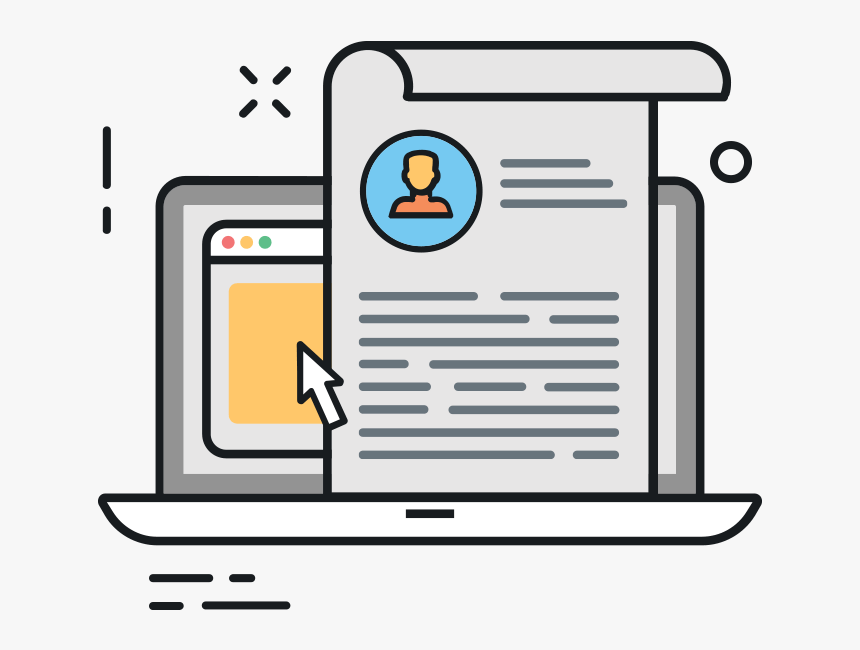Crafting a Robust Customer Personalization Strategy: A Data-Driven Approach
In today's fiercely competitive market, delivering personalized customer experiences is paramount for achieving sustainable business growth and fostering customer loyalty. This necessitates a sophisticated understanding of customer behavior and the strategic deployment of data-driven insights. This article outlines fifteen key strategies for building a robust personalization strategy, grounded in established marketing principles and illustrated with practical examples.
Defining Key Concepts
Before delving into the strategies, let's define some crucial concepts: Customer Relationship Management (CRM) refers to the systems and processes used to manage interactions with current and potential customers. Customer Segmentation involves dividing customers into groups based on shared characteristics. Data Analytics is the process of examining raw data to draw meaningful conclusions. Machine Learning (ML) leverages algorithms to identify patterns in data and make predictions. Finally, A/B testing involves comparing two versions of a marketing element to determine which performs better.
1. Comprehensive Customer Data Acquisition and Analysis
The foundation of any effective personalization strategy lies in the systematic collection and analysis of customer data. This involves integrating data from various touchpoints, including website interactions (website analytics), purchase history (transactional data), customer surveys (feedback data), and CRM systems. Employing data analytics techniques, such as descriptive, diagnostic, predictive, and prescriptive analytics, allows businesses to identify trends, preferences, and behaviors, enabling them to understand customer needs better. This approach aligns with the Customer Lifetime Value (CLTV) concept; by understanding customer behavior, businesses can better predict future value and tailor engagement accordingly.
Example: A luxury goods retailer uses data analytics to identify high-value customers based on purchase frequency and average order value, enabling them to offer exclusive promotions and personalized concierge services.
2. Strategic Customer Segmentation
Once comprehensive data is gathered, applying customer segmentation techniques is crucial. This involves categorizing customers based on demographics (age, location, income), psychographics (lifestyle, values, interests), behavioral patterns (purchase history, website activity), and needs. This segmentation strategy aligns with the Theory of Reasoned Action, which suggests that behaviors are influenced by attitudes and subjective norms. By understanding these factors, businesses can target segments with tailored messaging that resonates more effectively.
Example: A financial institution segments customers based on their financial goals (retirement planning, home purchase, etc.), enabling them to offer relevant products and services.
3. Dynamic Content Delivery: Tailoring the Message
Personalized content delivery is vital for effective engagement. This involves creating content that dynamically adapts based on individual customer profiles. This aligns with the Stimulus-Organism-Response (S-O-R) model, emphasizing the impact of stimuli (personalized content) on the customer's organism (their internal state), leading to a desired response (engagement, purchase). This could involve personalized email campaigns, website content, and targeted advertisements, all driven by the customer data analyzed in the previous steps.
Example: An e-commerce platform dynamically displays product recommendations on its website, showcasing items aligned with each user's browsing history and purchase preferences.
4. Real-Time Personalization: Enhancing Immediacy
Leveraging real-time data to deliver immediate, contextually relevant experiences enhances customer engagement and satisfaction. This requires robust data infrastructure and integration of various systems for immediate responses. The principle of operant conditioning comes into play; providing immediate rewards (personalized recommendations) reinforces positive customer behavior. This fosters a sense of immediacy and relevance, maximizing impact.
Example: A travel booking website uses real-time data to adjust flight and hotel recommendations based on the user's current location and search history, presenting the most relevant options instantly.
5. Leveraging Recommendation Engines: AI-Powered Insights
Employing machine learning algorithms to power recommendation engines greatly enhances personalization. These algorithms analyze customer data to predict preferences and suggest products or content likely to resonate with individual users. This is grounded in collaborative filtering principles, whereby recommendations are based on the preferences of similar users.
Example: A streaming service uses a recommendation engine to suggest movies and TV shows based on user viewing history and ratings, boosting engagement and satisfaction.
6. Personalized Promotions and Incentives: Driving Engagement
Tailoring promotional offers and discounts to individual customer preferences and behaviors maximizes their impact. This approach aligns with behavioral economics, which recognizes the influence of incentives on decision-making. Offering personalized rewards can significantly boost customer engagement and loyalty.
Example: A coffee shop uses a loyalty program that offers personalized rewards based on past purchases and preferred drinks, increasing customer frequency.
7. AI-Powered Chatbots for Personalized Support
Integrating AI-powered chatbots with personalized data enables businesses to provide efficient and highly tailored customer support. Chatbots can access customer data in real-time, delivering relevant information and resolving issues effectively. This improves customer satisfaction while streamlining operational efficiency.
Example: A bank uses a chatbot to provide personalized financial advice and answer customer queries based on individual financial profiles.
8. Social Media Data Integration: Understanding Customer Sentiment
Monitoring social media interactions provides valuable insights into customer sentiments, opinions, and preferences. This data can be used to refine targeting, personalize marketing messages, and develop products that better resonate with customer needs. Understanding the interplay of social influence and individual preferences aligns with the Social Cognitive Theory.
Example: A cosmetics company analyzes social media posts to gauge customer reactions to new products and uses this information to optimize its marketing campaigns.
9. Mobile App Personalization: Enhancing the User Experience
Personalizing the user experience within mobile apps through targeted recommendations, notifications, and customized settings increases user engagement and loyalty. Designing user-centric mobile apps adheres to the principles of user-centered design, prioritizing ease of use and functionality based on user needs.
Example: A news aggregator app delivers personalized news feeds based on user interests and reading history, improving engagement and satisfaction.
10. Optimizing the Customer Journey: A Holistic Approach
Personalizing the customer journey, from initial contact to post-purchase interactions, ensures a seamless and positive experience. By analyzing pain points and opportunities throughout the customer journey, businesses can improve engagement and boost conversion rates. This approach is grounded in the principles of customer journey mapping.
Example: An online retailer provides personalized email updates at each stage of the order fulfillment process, maintaining customer engagement and managing expectations.
11. Geolocation Personalization: Location-Based Targeting
Using geolocation data to deliver location-specific offers and recommendations enhances relevance and drives engagement. This is a practical application of proximity marketing, aiming to reach customers in their physical vicinity with pertinent offers. This can significantly boost conversion rates by tailoring offers to context.
Example: A restaurant chain uses geolocation to send location-based promotions to users near their establishments, driving foot traffic and sales.
12. Personalized Customer Support: Empowering Agents
Equipping customer support agents with access to personalized customer data allows them to provide more effective and efficient assistance. This approach aligns with the principles of customer-centric service delivery, where personalized attention improves both customer satisfaction and efficiency.
Example: A tech support company equips agents with a customer's purchase history and prior interactions to provide more accurate and timely support.
13. Personalization in Loyalty Programs: Fostering Long-Term Relationships
Customizing loyalty programs based on individual customer preferences and behaviors fosters stronger customer relationships. This is aligned with the concept of relationship marketing, which emphasizes building and nurturing long-term relationships with customers. Offering personalized rewards increases customer engagement and loyalty.
Example: A retail chain offers personalized rewards in their loyalty program, such as birthday discounts or early access to sales, based on individual spending habits and preferences.
14. Personalized Email Marketing: Targeted Communication
Tailoring email marketing campaigns based on customer data maximizes their effectiveness. Employing segmentation and targeting techniques within email marketing allows businesses to deliver relevant messages to specific groups. This approach significantly improves open rates and conversion rates.
Example: An online clothing store sends personalized email recommendations based on customer style preferences and past purchases, increasing the likelihood of conversion.
15. Continuous Testing and Optimization: Iterative Improvement
Regularly testing different personalization strategies and analyzing their results is essential for ongoing improvement. A/B testing various aspects of the personalization strategy, such as email subject lines, website layouts, or product recommendations, allows for data-driven decision making. This iterative approach aligns with the principles of agile marketing.
Example: An e-commerce website A/B tests different recommendation algorithms to determine which yields the highest conversion rate.
Conclusions and Recommendations
Building a successful personalization strategy demands a commitment to data-driven decision-making, continuous optimization, and a deep understanding of customer needs. By effectively leveraging data analytics, machine learning, and established marketing principles, businesses can create hyper-personalized experiences that drive customer engagement, loyalty, and ultimately, revenue growth. Future research should focus on exploring ethical considerations surrounding data privacy and the potential biases inherent in AI-powered personalization systems. Further investigation into advanced personalization techniques, such as contextual recommendations and anticipatory personalization, is also warranted.
The impact of a robust personalization strategy extends beyond immediate sales gains. It fosters stronger customer relationships, leading to increased brand loyalty and advocacy. This, in turn, contributes to improved customer lifetime value and sustainable business growth. The applicability of this approach is widespread, extending across various industries and business models.
Reader Pool:
Considering the ethical implications of data collection and usage, what additional safeguards should be incorporated into a personalization strategy to ensure customer privacy and trust?





No comments yet. Be the first to share your thoughts!